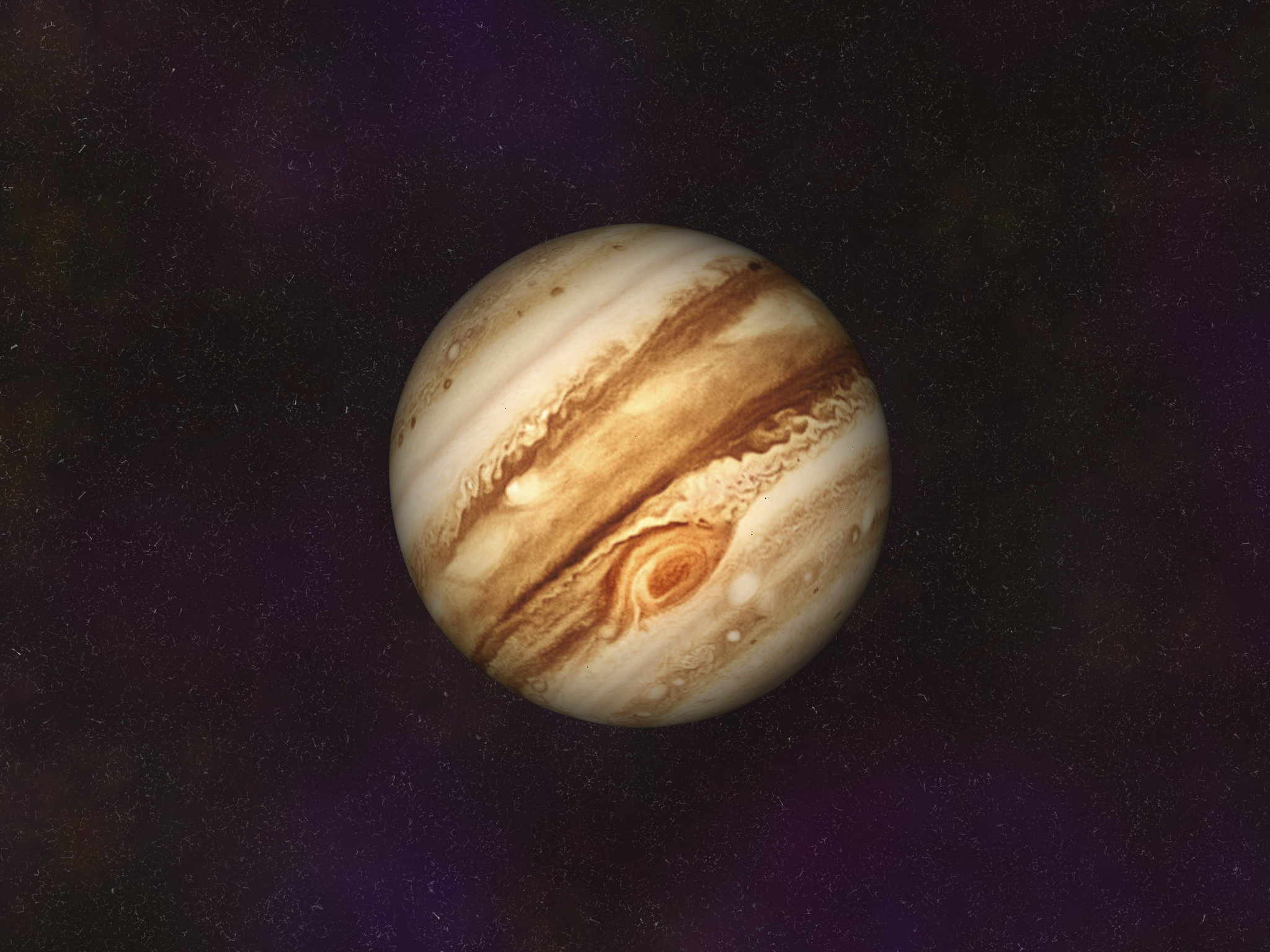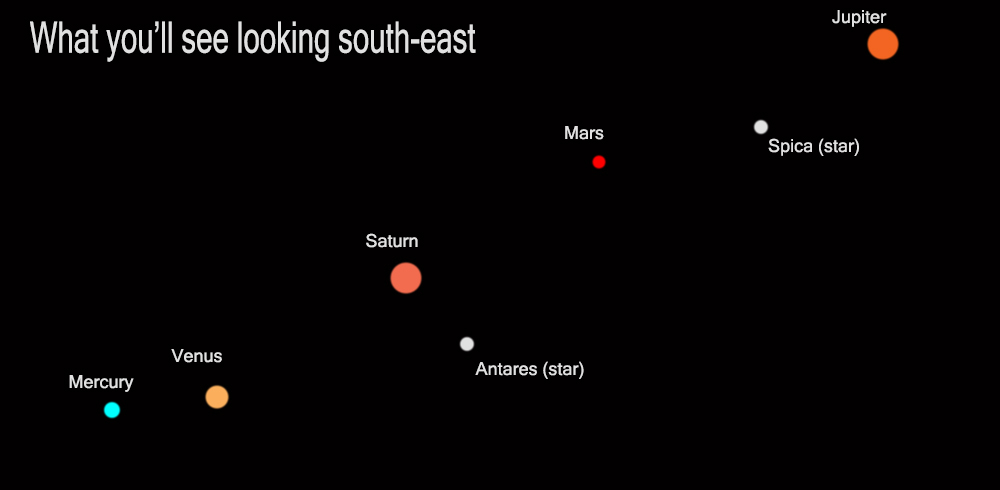
Five planets – Mercury, Venus, Mars, Jupiter and Saturn – will be visible together in the morning sky from Wednesday until around February 20, a phenomenon that has not happened since 2005.
You won’t even need a telescope or binoculars to see the so-called ‘naked-eye planets’.
Robin Scagell, vice-president of the Society for Popular Astronomy, explains how best to spot them:
- Get up early and make sure you have a clear view to the south east or south.
- The planets will be visible with the naked eye, though better views will be through a telescope or powerful binoculars.
- The five planets will be strung out in a line stretching from the horizon, from the south east to the south west, in the order of Mercury, Venus, Saturn, Mars and Jupiter.

- Some bright stars will also be visible, including Antares and Spica, but the planets will be brightest things to see.
- Observing the stars will be best between 7am and 7.30am each morning, with those in southern areas having to look a bit earlier than those in the north because it gets light about 15 minutes earlier in the south.
- Jupiter and Venus will be brilliant, and Saturn and Mars will be visible between them. Mercury will be the hardest to see because of its position near the horizon.
- To help people spot them they can follow the general rule that planets do not twinkle, whereas stars do.
READ MORE:
Scotland leading the way to play host to UK’s first spaceport

Enjoy the convenience of having The Sunday Post delivered as a digital ePaper straight to your smartphone, tablet or computer.
Subscribe for only £5.49 a month and enjoy all the benefits of the printed paper as a digital replica.
Subscribe